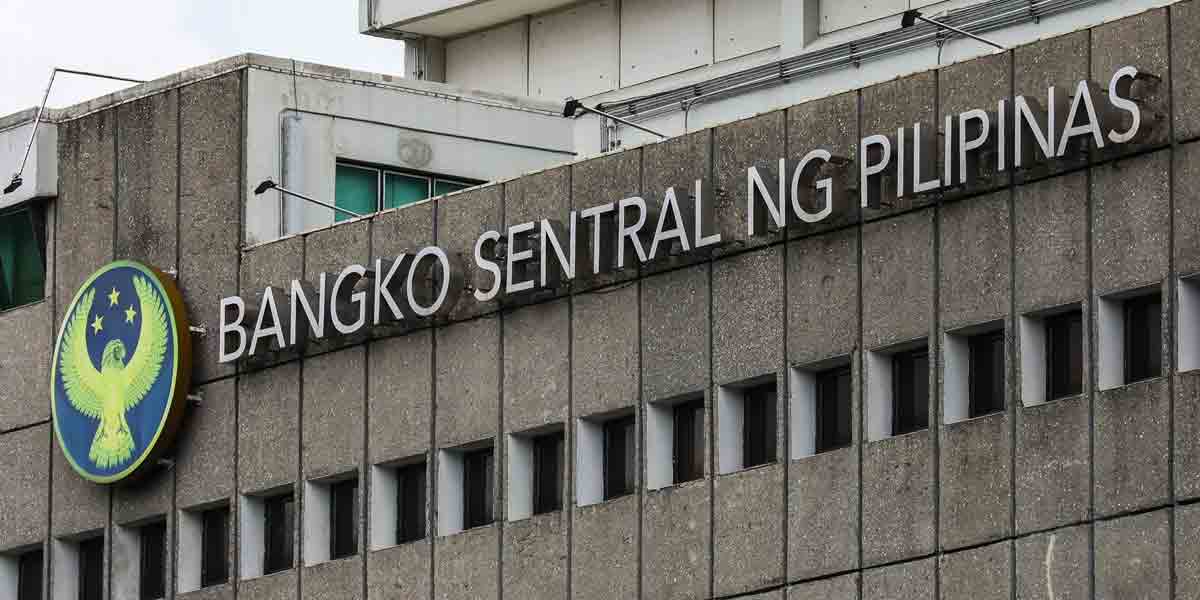
Results of the Q2 2023 Senior Bank Loan Officers’ Survey (SLOS)[1] indicated that a higher number of surveyed banks retained their overall lending standards for business and household loans based on the modal approach.[2] Similar with the previous quarter, the diffusion index (DI) method[3],[4] showed varied results pointing to a net tightening of loan standards to firms and a net easing of lending standards for consumers.
Lending Standards for Loans to Enterprises
Modal-based results for Q2 2023 revealed that a larger proportion of respondents (89.1 percent) kept credit standards for businesses unchanged. Meanwhile, the DI approach pointed to a net tightening of overall lending standards[5] across all borrower firm sizes due to the following factors cited by respondents: (1) deterioration in the profitability of banks’ portfolios, (2) less desirable borrowers’ profiles, and (3) reduced tolerance for risk.
Over the next quarter, the modal approach showed expectations of generally unchanged credit standards for businesses while the DI method pointed to bank respondents’ anticipations of net tightening of loan standards. Banks foresee an overall net tightening in loan standards for enterprises in Q3 2023 given the following considerations: (1) weakening profitability and liquidity of banks’ portfolios, (2) deterioration of borrowers’ profiles, and (3) reduced tolerance for risk.
Commercial Real Estate Loans. Results of the Q2 2023 SLOS reflected that most respondent banks (83.3 percent) pointed to broadly steady lending standards for commercial real estate loans (CRELs). On one hand, results from the DI method indicated a net tightening of loan standards for CRELs in Q2 2023 for the 30th consecutive quarter mainly due to weakening of borrowers’ profiles and lower risk tolerance. In the next quarter, banks anticipate maintaining their credit standards for CRELS based on both the DI-based method and the modal approach.
Lending Standards for Loans to Households
Majority of the surveyed banks (69.7 percent) broadly retained their loan standards for loans extended to households in Q2 2023. On one hand, the DI approach indicated a net easing of credit standards for household loans, particularly for housing, credit card, and personal/salary loans.[6] Bank respondents associated the easing of lending standards for consumer loans mainly with an improvement in the profitability of banks’ portfolios, an increase in risk tolerance, less uncertain economic outlook, and more aggressive competition from banks and non-bank lenders.
In the succeeding quarter, the modal approach indicated a higher percentage of surveyed banks expecting generally unchanged credit standards for household loans. The DI approach showed bank respondents’ expectations of a net easing in household loan standards in Q3 2023 mainly due to (1) increased risk tolerance, and improving profitability of banks’ portfolios for this market segment, and (2) more desirable borrowers’ profiles.

Housing Loans. In Q2 2023, a higher percentage of bank respondents (73.3 percent) reported maintained overall credit standards for residential real estate or housing loans. Meanwhile, the DI-based method indicated a net easing of credit standards for housing loans which was attributed by bank respondents mainly to improving borrowers’ profiles and less uncertain economic outlook. While most respondent banks expect to maintain credit standards for housing loans in Q3 2023, the DI method shows a net easing of housing loan standards for the following quarter.
Loan Demand from Enterprises
The modal-based approach for the Q2 2023 results revealed broadly unchanged loan demand from businesses (69.6 percent). However, the DI method continued to reflect a net increase in overall lending demand from across all firm classifications, largely due to increased customer inventory financing and accounts receivable financing along with improvement in customers’ economic prospects.[7]
For Q3 2023, a larger proportion of respondents indicated expectations of broadly retained loan demand from firms. However, the DI method indicated that respondent banks expect a net increase in overall credit demand from firms in the next quarter given businesses’ increasing inventory and accounts receivables financing requirements and improvement in customers’ economic outlook.

Commercial Real Estate Loans. Demand for CRELs in Q2 2023 was broadly steady based on both the modal and DI approaches due to borrowers’ stable economic prospects. Based on the modal approach, most banks anticipate demand for CRELs to be maintained in the next quarter. Meanwhile, DI-based results showed banks’ outlook of higher loan demand for CRELs in Q3 2023 on expectations of higher customer inventory and accounts receivable financing needs and improvement in customers’ economic outlook.
Loan Demand from Households
Results for the Q2 2023 survey showed generally unchanged lending demand from households (65.6 percent) based on the modal method. Meanwhile, DI-based results revealed a net increase in overall household loan demand across all key categories such as housing, credit card, auto, and personal/salary loans. Banks associated the overall increase in household loan demand with higher household consumption and housing investment as well as banks’ more attractive financing terms.
Over the following quarter, more than half of the respondent banks expect maintained loan demand from households. Meanwhile, the DI method, indicated that banks anticipate a net rise in overall consumer loan demand in Q3 2023 largely due to expectations of higher household consumption and housing investment. [8]

Housing Loans. Banks participating in the survey observed maintained loan demand for housing loans in Q2 2023 and expect a similar outcome in Q3 2023. Meanwhile, the DI approach pointed to a net increase in residential real estate loan demand for both the current and next quarter due to higher household expenses and investment for housing.
[1] The SLOS consists of questions on loan officers’ perceptions relating to the overall credit standards of their respective banks, as well as to factors affecting the supply of and demand for loans to both enterprises and households. The analysis of the results of the SLOS focuses on the quarter-on-quarter changes in the perception of respondent banks. The responses for the Q2 2023 SLOS were gathered between 5 June and 12 July 2023 from 48 banks out of the total 62 bank participants. The response rate of 77.4 percent is higher compared to the response rate of 75.0 percent in the Q1 2023 SLOS. It should be noted that the number of respondents also decreased following the merging of Bank of the Philippine Islands (BPI) and BPI Family Savings Bank, Inc. (BFSBI).
[2] In the modal approach, the results of the survey are analyzed by looking at the option with the highest share of responses. The three options for the modal approach are either 1) tightening, 2) easing, or 3) unchanged credit standards for loans to enterprises and for loans to households.
[3] In the DI approach, a positive DI for credit standards indicates that the proportion of respondent banks that have tightened their credit standards exceeds those that eased (“net tightening”), whereas a negative DI for credit standards indicates that more respondent banks have eased their credit standards compared to those that tightened (“net easing”). Meanwhile, an unchanged credit standards in the DI approach indicates that the proportion of the respondent banks that have tightened their credit standards is equal to those that eased their credit standards.
[4] During the Q1 2010 to Q4 2012 survey rounds, the BSP used the DI approach in the analysis of survey results. Beginning in Q1 2013, the BSP used both the modal DI approaches in assessing the results of the survey.
[5] The net tightening of credit standards for business loans In Q2 2023 is reflected in the reduced size of credit lines, stricter collateral requirements and loan covenants, and more use of interest rate floors.
[6] The net easing of credit standards for consumer loans in Q2 2023 is reflected in the narrower loan margins for residential real estate and auto loans along with increased size of credit lines for credit card and personal/salary loans.
[7] The BSP Business Expectations Survey (BES) Q2 2023, business confidence in the economy improved for Q2 2023 stemming from respondent firms’ expectations of (1) increase in sales and production due to stronger demand for goods and services across all sectors, (2) continued post-pandemic recovery, (3) fully reopened economy, (4) easing inflation, and (5) seasonal uptick in demand for certain goods such as rice, corn and other cereals, construction materials, electronics, chemicals, food and beverages, metal and steel, and sporting goods and equipment. Correspondingly, business sentiment for the next quarter is less optimistic due to the expected downturn in seasonal production and sales, and lower demand for consumer goods along with fewer construction projects and higher interest rates.
[8] According to the BSP Consumer Expectations Survey (CES), consumer sentiment for Q2 2023 remained pessimistic due to households’ concerns over (1) faster increase in the prices of goods and higher household expenses, (2) lower income, (3) fewer available jobs, (4) and the effectiveness of government policies and programs on inflation management and economic resilience. Meanwhile, the expected increase in consumer loan demand in Q3 2023 can be associated with household respondents indicating that loan proceeds in the last 12 months are used to purchase basic goods followed by expenses for education-related costs and health-related expenses.





















